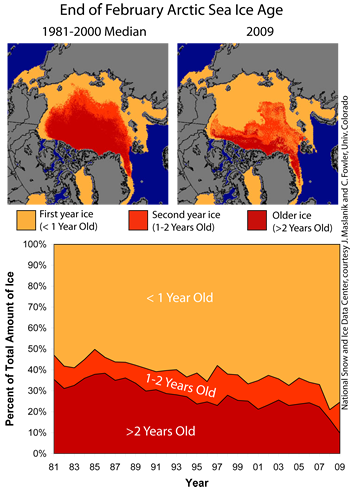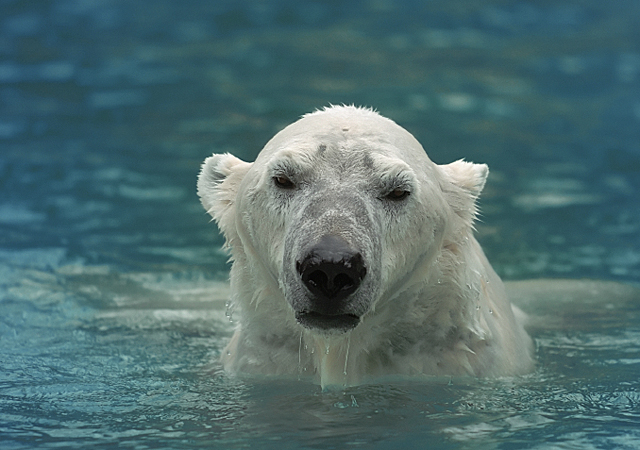It’s the ice thickness, stupid.
The Arctic ice cover, which has endured for at least 100,000 years, will be all but gone within a decade according to a volume-based projection by a leading British scientist, the BBC reports. At the same time, “a gruelling 73-day” survey of sea-ice thickness found “the average thickness of the sea ice was 1.774 m” [5.8 feet].
One surveyor said the data “seems to suggest it was almost all first-year ice.” And that confirms what the National Snow and Ice Data Center reported in April:

The view of the Arctic from above tells you only ice area, not volume. So even as the climate science deniers (temporarily) crow about the latest two-dimensional data, those who think three-dimensionally know that the Arctic is a cracking eggshell (see NSIDC: Arctic melt passes the point of no return, “We hate to say we told you so, but we did.”).
Peter Wadhams, head of the polar ocean physics group at the University of Cambridge, “believes the ice, which has been a permanent feature for at least 100,000 years, is now so thin that almost all of it will disappear in about a decade“:
“By 2013, we will see a much smaller area in summertime than now; and certainly by about 2020, I can imagine that only one area will remain in summer.”
Although this bleak forecast is reinforced by the survey team’s data, Professor Wadham’s new assessment is based on analysis of nearly 40 years of sonar data gathered on Royal Navy submarines patrolling beneath the ice – the first, HMS Dreadnought, was in 1971….
Now Professor Wadhams, who has studied the Arctic for the past 40 years, says that there is “almost a breakdown” in the ice-cover….
Much of what is left of this ice accumulates in an area north of Greenland and Ellesmere Island in Canada, and may form what he calls “a last holdout, a kind of Alamo”.
Yes, well, if we remember the Alamo, it is not a pretty picture.
The recently finished survey was very thorough:
“In our time here we have captured around 16,000 observations and [taken] 1,500 measurements of the thickness of the ice and snow as well as its density.”
… Typically, about 40% of the Arctic Ocean is covered with older, thicker ice, but that has been greatly reduced.
Referring to the direct measurements taken by the Catlin team, [Canadian ice service analyst, Trudi] Wohlleben said: “It is very nice to have ‘ground-truthing’ of what you’re interpreting from the satellite data.
“So when we look at the imagery, we’re expecting the first year ice to be between 1m and 2m thick and it’s nice to have those numbers confirmed.”
The end — of a year-round ice-free Arctic — is nigh.


